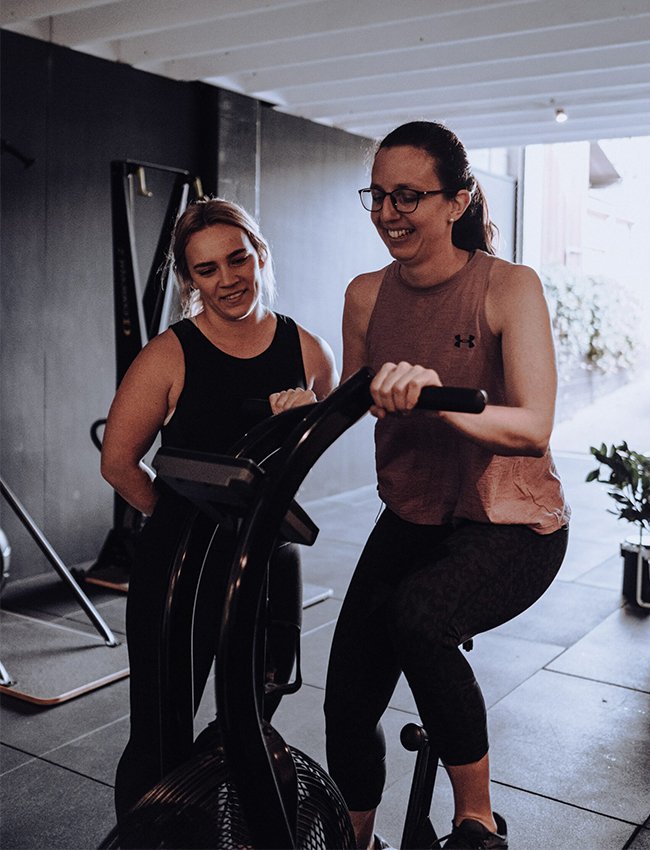Tackling the physical activity gender gap
SOF’s newest program, Strong Minds, Strong Bodies, has been developed to address barriers to physical activity for young females. Through educational modules and learning new types of exercise in a safe judgment-free environment, young women involved in the program will feel empowered to confidently engage in physical activity and develop positive relationships with exercise.
We will be hosting a FREE workshop on the 25th of May to give you a taste of what this program involves. Here’s why you need to bring your daughter along.
Whether we like it or not, gender shapes a person's overall health (physical, mental, and social well-being). There are endless factors that influence health, but for argument’s sake, let’s focus on the role of physical activity.
Who do you think is generally more active? Males or females?
You probably answered males, and you’d be right, but have you ever thought about why?
In a nutshell, in Australia, 2 in 5 women are sufficiently active compared to 1 in 2 men (AIHW, 2019). This trend also occurs across most countries and is what is referred to as the ‘physical activity gender gap’ (PAGG) (Cla, 2018). We all know that insufficient levels of physical activity put people at a higher risk of a whole bunch of diseases; cardiovascular disease, type 2 diabetes and osteoporosis. By being physically active, we can improve our mental and musculoskeletal health, as well as reduce risk factors such as obesity, high blood pressure and high blood cholesterol (AIHW, 2019). So, it’s no surprise that with lower levels of physical activity, women are more likely to experience multiple chronic conditions in their lifetime in comparison to men (AIHW, 2019).
As a society we should be striving to improve the health and well-being of females. Why? Because we all have amazing women in our lives; mothers, daughters, wives, sisters, friends, and they deserve the same level of health as their male counterparts. Unfortunately, PAGG is an issue that extends right back to the beginning of time, entangling the complex concept of gender norms with it.
When a child is exposed to narrow gender norms, values, and expectations, it can result in a lack of enjoyment and confidence in movement and the body (Cla, 2018). Take school for example. As a kid, what was your favourite thing to do at lunch time? If you’re a male, it might have been dominating the handball court, or maybe playing soccer on the oval with the rare sighting of a confident girl you might have called a ‘tom boy’. If you’re female, do you recall being as active as the boys? If not, was it anything to do with confidence?
The danger in gender norms in the context of physical activity is that such restrictive and harmful attitudes create barriers to movement in ripple effect (Kennedy et al., 2020). Perceived barriers to physical activity are higher among young females than males and we know that the number of these barriers can determine compliance to physical activity recommendations (Rosselli et al., 2020). This plays into why young females are more sedentary than young males and fall below the recommended physical activity guidelines at 13 years old - two years earlier than their male counterparts. Common barriers to physical activity for adolescent females include low confidence, concern with appearance, lack of energy and lack of time (Walters, 2020).
Gender norms influencing females involvement in physical activity extend outside the school grounds and into adulthood. Take the beach for example. Typically males are engaging in activities such as surfing, kicking the footy or running around with mates, whilst females are happy to lay on a towel, read a book or chat with friends. The same barriers to physical activity exist for women as they do for girls. So, perhaps it’s the unsupportive modern day bikini standing in their way. Whatever it is, such subtle barriers are contributing to lower levels of physical activity and subsequently feeding the inequalities in health and well-being for women across their lifespan (Kennedy et al., 2020).
To make matters worse, while battling barriers to physical activity during adolescence, depressive symptoms in girls begin to rise (Allison et al., 2001). Since 2012, twice as many females between 15- and 19-years-old have experienced psychological distress such as anxiety, depression, and poor self- esteem, compared to males of the same age. Unfortunately these numbers continue to rise (Brennan et al., 2021). If we apply what we know about the mental health benefits of physical activity, adolescence is certainly not a time where girls should be increasing sedentary time. In fact, it’s a vital period for intervention with health programs tailored to their individual needs.
The Strong Minds, Strong Bodies program does just this. It addresses common barriers to physical activity for young females through education around the importance of physical activity and by offering a safe environment to apply these learnings. By providing better access to programs such as this, we truly can change the course of young female lives.
Our upcoming workshop aims to bridge the physical activity gender gap and ultimately, enhance the overall health and well-being of your daughter. Purchase your tickets to our FREE workshop here.

